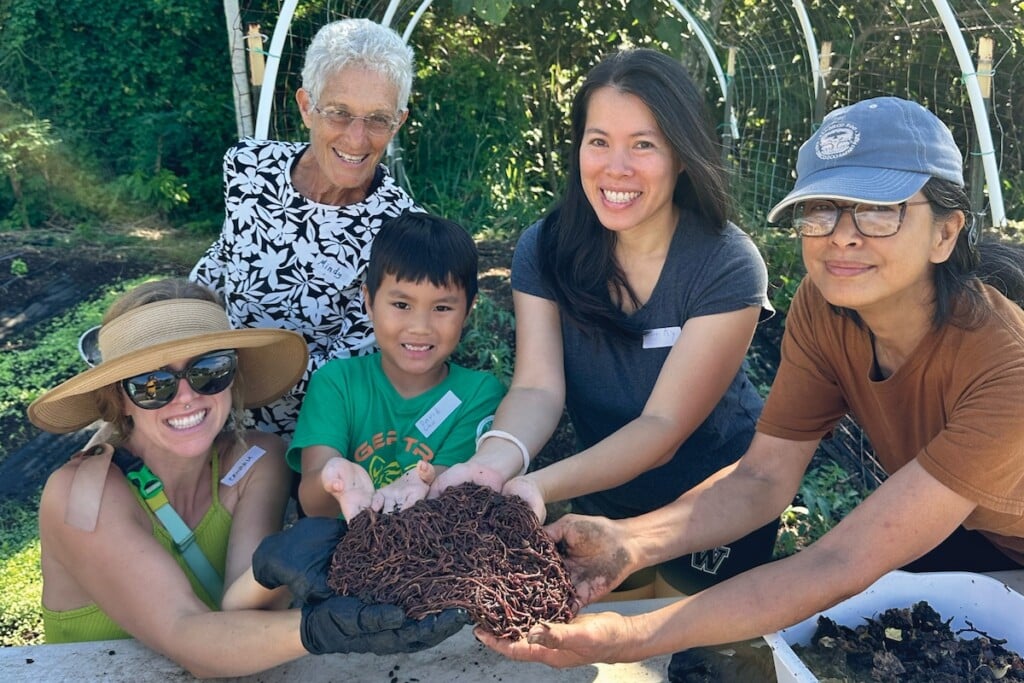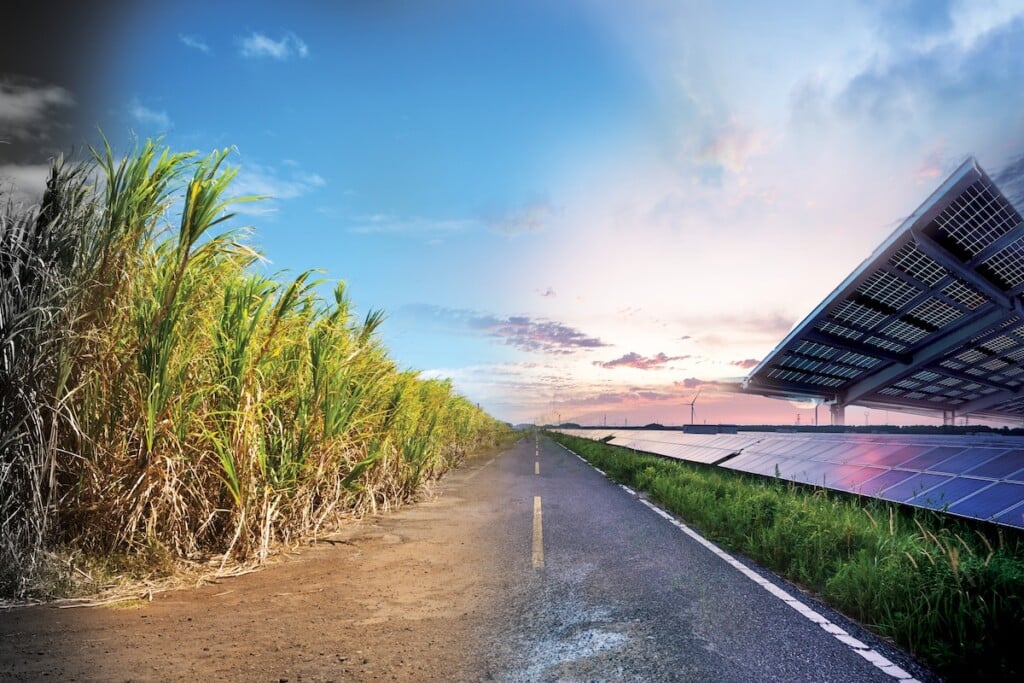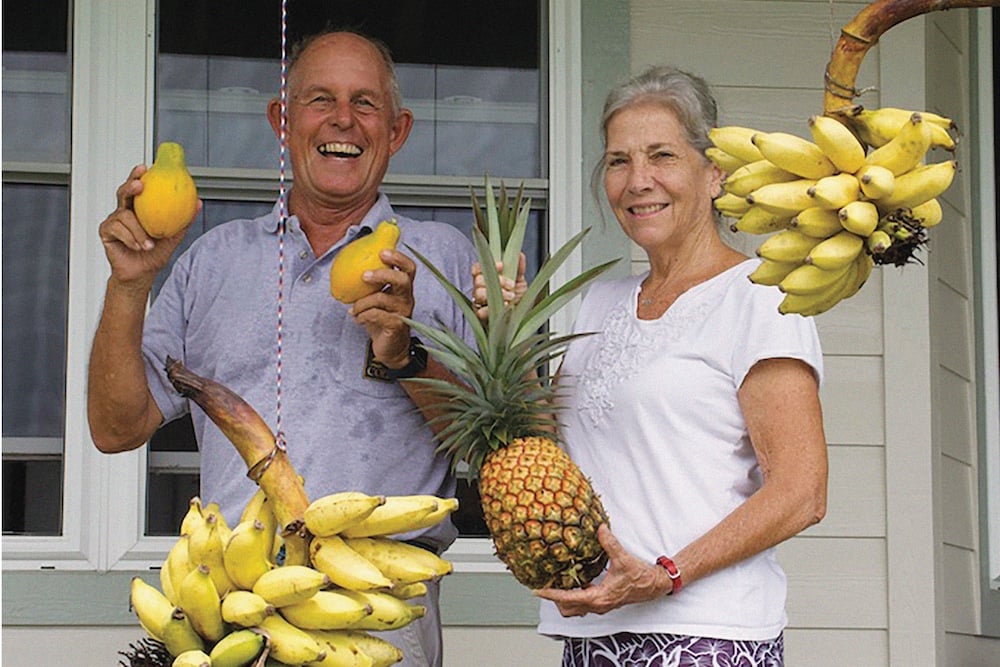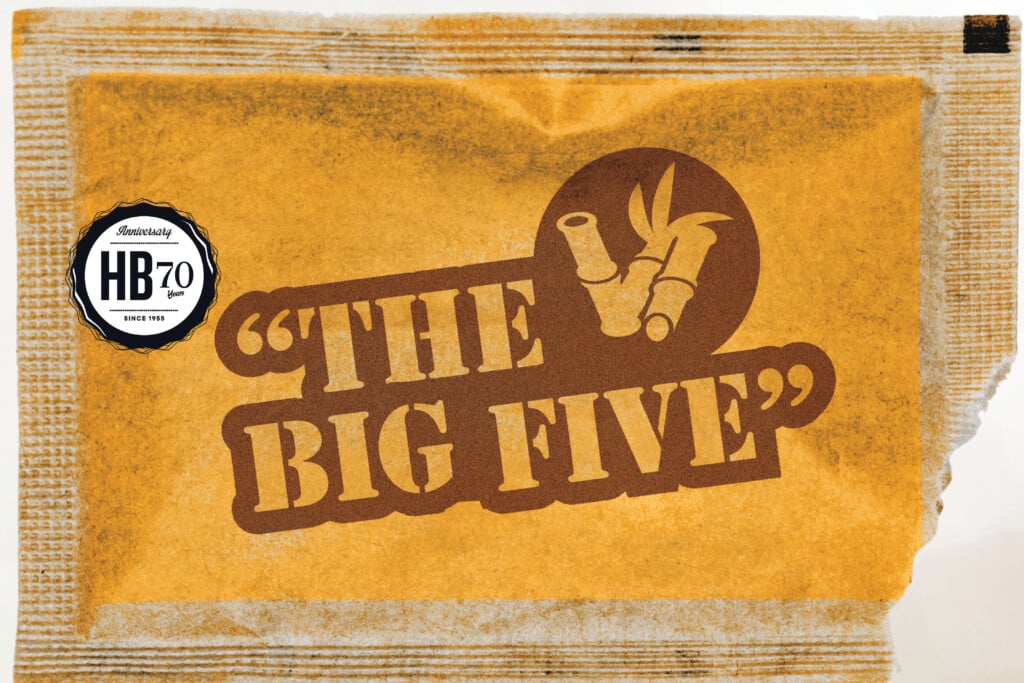Not Grown in Hawai‘i
Some local companies – including the state’s biggest seller of macadamias – use foreign nuts in some of their products. Local growers and companies that sell only Hawai‘i-grown nuts want a label-of-origin law with added teeth, not the limited version that takes effect Jan. 1.
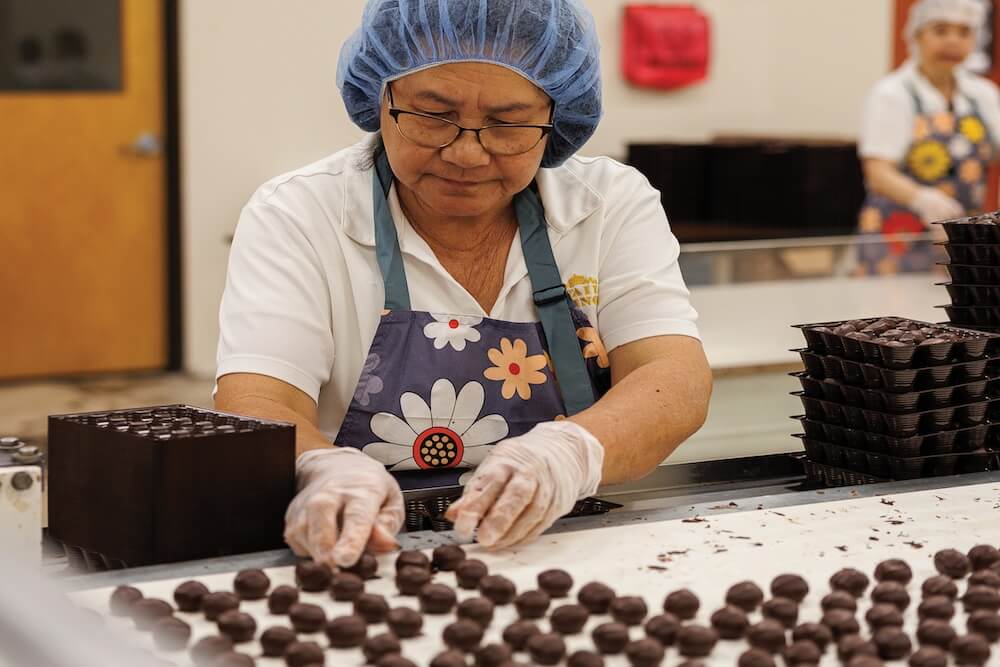
This story, originally posted online May 3, has been revised to include additional reporting.
Hawai‘i’s macadamia nut farming industry is in crisis and a state law that takes effect Jan. 1, 2026, has exceptions that will diminish its relief.
In 2021, mac nuts were the state’s second-most important agricultural commodity, generating $62.73 million in revenue, according to an annual report released by the state Department of Agriculture. In 2022, mac nuts dropped to fifth place with just $33.18 million generated and by 2023, the last year for which data is available, mac nuts ranked seventh, generating only $30.91 million.
I spoke with leaders of three brands that say they exclusively use Hawai‘i-grown macadamia nuts in their products and process all their nuts locally. And I spoke with the CEO of the state’s biggest mac nut seller by far, Hawaiian Host Group. Hawaiian Host uses both local nuts and cheaper foreign nuts even though their packages emphasize Hawai‘i and do not mention when the nuts are foreign grown.
Mac Nuts from Africa and Australia
Macadamia nuts are an iconic Hawai‘i commodity, but imported nuts are used in some Hawai‘i-branded products. “Mac nuts have been imported from other areas for probably decades, but when it really started to become a problem and farmers began to take notice was during the pandemic,” says Jeff Clark, president of Hāmākua Macadamia Nut Co., which says it uses only local nuts in its products and processes them in the Islands.
According to its website, Hawaiian Host, which acquired the Mauna Loa brand in 2015, “currently has 80% of macadamia nut sales across Hawai‘i,” and the company has said tourism accounts for 65% of sales for the two brands.
So, when the pandemic halted tourism, Hawaiian Host almost went bankrupt. Then, in 2022, its Kea‘au nut cracking facility shut down after the EPA notified the company that the Hawai‘i Island facility’s 50-year-old biomass boiler no longer met EPA standards. Ed Schultz, Hawaiian Host Group’s president and CEO, explains that “the backup solution to that was burning diesel,” which “wasn’t sustainable.” Hawaiian Host’s Mauna Loa brand continues to use part of the plant for salting, seasoning and packaging nuts, as well as a visitor center that offers tours.
Schultz says this temporary reduction in processing capacity led Hawaiian Host Group to rely more on imported nuts that season. However, he says, the following year, HHG’s acquisition of an orchard on Hawai‘i Island that included an existing nut cracking processing plant, enabled them to resume purchasing and processing roughly the same quantity of locally grown nuts as in prior years.
Chad Cleveland is the owner of Ahualoa Family Farms, another company that exclusively uses local nuts and processes them in the Islands. Cleveland says the move to imported nuts in 2022 by some companies was a huge blow to mac nut growers on Hawai‘i Island: “Farmers did go out of business, or a lot of them didn’t even harvest. And that’s kind of when some of these other countries had a lot of these new plantings mature. So then there was a flood of foreign-grown nuts that you could buy for pennies on the dollar, which affected the market here.”
According to Russell Clark, a macadamia nut grower on Hawai‘i Island, “a lot of people have stopped picking their nuts. On the extreme end, they’ve cut trees down. The problem with that is getting a newly planted mac nut tree to production takes about eight years. So if you start cutting down your trees, you’re really putting the seal of death on it. At that point, you’re saying, I’m not going to be in that business again.”
Based on public import data, Hāmākua’s Jeff Clark says, “Hawaiian Host brought in 1.5 million kernel pounds of nuts in 2024. … That’s about 30% of what’s grown in the state.” Meanwhile, he says, “we have farms that are going out of business because they have no market. Mauna Loa is not buying it.”
When I initially asked to interview a Hawaiian Host representative in late March, I received an emailed statement from Schultz, who was on vacation at the time. He acknowledged Hawaiian Host buys foreign nuts but refused to disclose from which countries and what percentage of their nuts are imported.
“To fulfill the high demand for our products, we buy additional macadamias from other Hawaiian growers that we process in our local facility as well. In the past two harvest years, for example, we have purchased every high-quality Hawaiian macadamia that a small or large farmer wanted to sell us. … Yet, as we sell our products in 49 states and export to over 23 countries around the world, we need a significant amount of macadamias that exceeds what we can source from our own local orchards or other high-quality growers in Hawai‘i.”
In a follow-up interview on May 10, Schultz says HHG’s Mauna Loa brand currently sources “nearly 100%” of its nuts locally and estimates that “by October 25 you will see front-of-pack labeling that says 100% Hawaiian macadamias.”
Schultz again declined to disclose the percentage of imported nuts used in Hawaiian Host products, their brand which exclusively sells confections such as chocolate-covered macadamias. He did state that “the vast majority of [imported nuts] don’t make it to Hawai‘i,” meaning “they’re just never brought in for sale in this market.”
He says imported nuts are primarily used in Hawaiian Host products manufactured and sold on the mainland and overseas but says Hawaiian Host is also using imported nuts to a lesser extent in some products sold here.
Schultz confirms Hawaiian Host Group currently buys nuts from South Africa and Australia: “We know the growers. If we buy from somebody, it’s because I’ve been to and seen the source, and I know whether it’s sustainable and how they’re treating workers. But, you know, Australia grows a great product. South Africa does [too].”
And he says the trees that supply HHG from both countries are Hawaiian rootstock. “UH gave all the trees to the Australians and South Africans to start their farms,” he says.
At least eight mac nut companies say they’re committed to using only Hawai‘i-grown nuts in their products, according to the Hawai‘i Macadamia Nut Association. Many of these companies grow their own nuts and purchase additional nuts from other local farmers.
Among those companies is Island Princess and its parent, Hawaiian King Candies. Owner Patrick Haddad says his company purchased from 46 Hawai‘i growers last year. His reasoning: “If I don’t help the grower, I’m going to be alone one day.”
But the exclusively local brands can only buy so much, Hāmākua Macadamia Nut Co. President Clark says. “We’ve purchased in the past from about 150 independent farmers,” but from fewer today because of recent economic conditions, Clark says. He blames Hawaiian Host’s purchase of foreign nuts. “I can’t pay a Hawai‘i price to local farmers, because I can’t compete with Hawaiian Host using their cheaper kernel.”
Cleveland of Ahualoa Family Farms echoes Clark: “Of course, foreign grown nuts are going to cost far less money, so they’re going to be less expensive on the shelf when we’re barely scratching by with our margins to even market our nuts at a reasonable price. It’s very difficult for us with our economies of scale.”
Their biggest gripe with Hawaiian Host is not that it outsources its nuts. The complaint is that the company deceives consumers with packaging that showcases Hawai‘i but does not disclose the nuts are from elsewhere.
Misleading Marketing
A lot of tourists and locals want to buy made-in-Hawai‘i products – and are often willing to pay more for the real deal.
“If you look at any of the packaging that Mauna Loa and Hawaiian Host has, it’s in their (brand) name,” says Clark. Individual product names include AlohaMacs and Island Macs. He says the companies are “using all these crafty marketing terms to market their product without saying Hawaiian nuts. But they’re cleverly dancing around that.”
A label that calls the nuts “the original gift of aloha” appears on the packaging of many Hawaiian Host products, alongside Hawai‘i imagery such as Diamond Head, lei, waves and women in traditional Hawaiian attire.
“The one thing that gets me probably the most is just the deceptiveness,” says Cleveland. “It hurts my heart just to know that these people, whether they’re a visitor or someone who lives here or who is from here or is Hawaiian, thinks they’re getting an authentic Hawai‘i-grown and produced product.”
The Hawai‘i Macadamia Nut Association advocates for a labeling law from the state Legislature that would require brands to clearly state where their macadamia nuts are grown. According to Clark, every member of the association – except for Hawaiian Host – agrees it’s “not fair that they can use the marketing power of Hawai‘i while not using the ag aspect of Hawai‘i.”
The first label-of-origin bill failed in the state Legislature, but a watered-down version was approved on its second attempt. It was signed into law in June 2024 and is set to take effect on Jan. 1, 2026.
“We were advocating for all macadamia products to be included under this bill, which would have included chocolate covered and even cookies and things like that to have to label if they’re using Hawaiian or foreign nuts,” Clark says.
But the law that passed excluded macadamia nut products with multiple ingredients, such as chocolate-covered macadamia nuts or macadamia nut cookies. Currently, the label-of-origin legislation covers macadamia nuts that are plain, salted, honey-roasted, coconut and coffee-glazed, Maui onion, chili-spiced and other seasoning and flavor varieties.
“That’s a big hole in the market,” Clark says, adding that the macadamia nut association hopes a more comprehensive labeling law passes soon.
Given that nearly all of Mauna Loa’s products are flavored macadamia nuts, whereas Hawaiian Host exclusively sells macadamia nut confections, the current wording of the legislation that takes effect Jan. 1, 2026, would apply to the bulk of Mauna Loa’s products but none of Hawaiian Host’s product line. However, the law would not require the Mauna Loa brand to label whether local or outside nuts were used in its chocolate-covered whole macadamia nuts.
In his emailed statement, Hawaiian Host’s Schultz says his company fully supports the label-of-origin law that goes into effect Jan. 1, 2026. During our follow-up interview, I asked if he supports extending the label-of-origin law to confections, such as chocolate-covered macadamia nuts, macadamia nut cookies and ice cream.
“Do we support it on mac nuts? Yes. Do we support it on other food products? No.” He argues that in a lot of macadamia nut confections, “at least 80% of the ingredients are not from here. … There’s no disclosing where the cacao is from. It’s the number one ingredient on any confection item, we’re not disclosing that. Then you can get into the number two ingredient. We don’t disclose where that’s from. So, it’s like, at what point do we get down to the over regulation part of this?”
But some of his industry peers find fault with Schultz’s reasoning. Clark, whose Hāmākua Macadamia Nut Co. sells confections made with 100% locally grown macadamia nuts, calls them “the star of the show.”
“Obviously, they’re not doing chocolate-covered cashews or peanuts because the commercial macadamia industry was developed in Hawai‘i, right? … That’s why it’s identified here. No different than pineapple,” he says.
Big Island macadamia nut grower Russell Clark, a former attorney, says, “If you look at it just purely from a common law perspective, put the legislation piece aside, you’ve got a very strong argument that representing those as Hawaiian nuts is common law fraud, and so it’s just not a smart way to be doing business right now, in my opinion.”
Given that the label-of-origin legislation is a state law, companies will not need to disclose where nuts are grown in products sold outside of Hawai‘i. Regarding whether Mauna Loa’s seasoned and flavored nuts sold on the mainland and overseas will consist of 100% Hawaiian nuts, Schultz stated, “I cannot comment on that. Again, we’re going to be compliant with the labeling law.”
Although Hawaiian Host is against label-of-origin legislation for confections, Schultz says this year they “advocated at the state Legislature for additional labeling laws that would require ‘Hawaiian Macadamias’ to not only be grown in Hawai‘i but also processed here. The processing phase involves removing the husk, drying the nut, cracking the shell and roasting the kernel.”
Clark says he opposes Hawaiian Host’s proposal to make local processing a requirement for the Hawai‘i label. “I oppose the bill, not necessarily because I oppose the idea of processing in Hawai‘i. Clearly, we support that. I oppose it because they’re the very guys that reduce the capacity to crack. … We still don’t have enough capacity to crack all the nuts grown here” after the Kea‘au plant was closed.
Concern about insufficient infrastructure is where Clark and Schultz find common ground. “That’s why our industry’s focus should be to grow together,” says Schultz. “To do this, we need a modern co-op processing facility that gives all growers, large and small, economies of scale to compete on a global market.”
Schultz says the state’s largest mac nut grower sends 30-40% of the state’s macadamias to China for processing to avoid Hawai‘i’s high labor costs. He says Hawaiian Host “never has and never will” purchase macadamia nuts from China, nor do they process there.
“There has to be a solve for all the nuts leaving Hawai‘i to go to China,” he says. “Otherwise, we cannot build a plant big enough to effectively compete on a global scale. We have to compete globally. We can’t just compete locally. That’s not going to create jobs, that’s not going to create inward investment. … If we really want to talk about fixing the industry, you have to fix that.”
Schultz did not name the state’s largest mac nut grower, but that company is Hawaiian Macadamia Nut Orchards. Brad Nelson, president of the general partner of Hawaiian Macadamia Nut Orchards, says the company had no choice but to partially process their nuts outside of Hawai‘i after Hawaiian Host Group shut down its Kea‘au facility. He gave two reasons: First, because it was by far the largest facility of its kind in the state, capable of processing all Hawaiian-grown macadamia nuts. Given that Hawaiian Macadamia Nut Orchards cultivates about 30-40% of Hawai‘i’s macadamia nuts, all of the remaining processors in Hawai‘i combined “can’t take all our nuts,” he says.
Second, because the Kea‘au facility “was the only plant, or is the only plant, because it’s still standing, that was designed to be able to handle mechanically harvested nuts,” he says. Hawaiian Macadamia Nut Orchards uses mechanical harvesters to gather nuts from the ground, which is much faster than handpicking, but the downside is that the machines sweep up twigs, stones and other debris in with the nuts.
“Mechanically–harvested plants have separators that separate out the leaves, the sticks and stuff like that, and remove them before they go into the plant. If we did not send stuff out of Hawai‘i, there’s no plant that can take our nuts.”
He said a deal was in the works for his company to buy the plant from Hawaiian Host Group’s previous owners, but “when Ed Schultz came in, he cut that off. Every time we try to buy a plant or do a processing agreement, he blows it up.”
So, he explains, their only options were to send nuts to a cracking plant outside of Hawai‘i or go out of business. “All they’re doing [at the plant in China] is removing the shell from the nut,” says Nelson, adding that the facility is “audited by the USDA and FDA.” The other aspects of processing – husking, drying, pasteurizing and roasting – are done at Hawaiian Macadamia Nut Orchards’ own local facilities or other facilities in America. And deshelling the nut will soon be done locally too, he says: “We’re building the cracking plant. We’ve ordered all the equipment,” which will be here by summer, says Nelson.
“Right now, Ed has over 90% of the market share in Hawai‘i. He has control. He may say that [Kea‘au] plant is down, but physically it’s there. He probably has control over 80% of the processing capacity in Hawai‘i and he’s systematically put the price down to where we cannot stay in business. … We really just want to get to the point where we can make a reasonable amount of profit to reinvest in equipment, increase productivity and actually grow macadamia nuts.”
Made in Hawai‘i vs. Elsewhere
Most of the state’s mac nut farms are in the Hāmākua, Puna and Kohala districts of Hawai‘i Island, which is where Hawai‘i’s first commercial macadamia nut trees were planted over a century ago. Mac nut trees thrive in warm, subtropical conditions that get consistent rainfall.
“The quality of what feeds the mac nuts, the water and soil, is the best in the world,” says Hawaiian King Candies’ Haddad. “Water, because we are the furthest from any continent, so we are one of the least polluted areas. Second, the soil is renewed due to the fact that it’s a volcanic soil, and the absorption of the mineral is much better in Hawai‘i than anywhere in the world.”
Clark says you can taste the difference: “If you think of where else macadamias are grown – Australia, South Africa, Kenya, Brazil, Guatemala and now China – each has their own kind of growing conditions, and different types of soils. None is the same as what we grow in, which is purely volcanic type soils. So that is really the difference, that creamy, buttery texture that we get out of the macadamias that we grow here.”
Cleveland says sourcing macadamia nuts from foreign countries comes with uncertainties, particularly regarding freshness, food safety and ethical practices. He adds that imported nuts may spend extended periods in storage before being purchased, processed and transported, which can impact their quality. “That kind of taints the quality or perception of Hawai‘i-grown nuts” if they are being falsely marketed as such, says Cleveland.
Schultz says all Hawai‘i-grown nuts used in Hawaiian Host Group’s products are processed locally, but imported nuts are processed in the country of origin and then shipped to Hawai‘i raw and pasteurized here. He says foreign-grown and processed nuts are just as safe to eat as local nuts: “Everything we do is FDA inspected, USDA certified. … We’re very serious about food safety.”
This issue of protecting Hawai‘i’s brand from deceptive marketing goes far beyond mac nuts: Kona coffee, sea salt and māmaki tea have provoked similar controversies in recent years.
“Everyone deserves to know what they’re purchasing so then they can make that educated decision on who they want to support, and, yeah, maybe they need to buy the cheapest one. That’s fine as long as they know what they’re getting,” Cleveland says.




